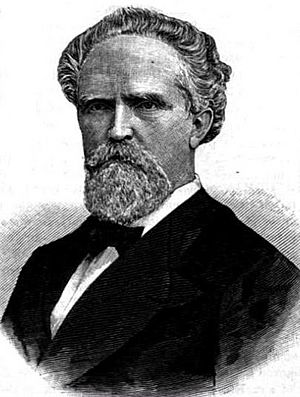George D. Tillman facts for kids
- This is an article about a U.S. politician. For the African-American film director, see George Tillman, Jr..
Quick facts for kids
George D. Tillman
|
|
|---|---|
 |
|
| Member of the U.S. House of Representatives from South Carolina's 2nd district |
|
| In office March 4, 1883 – March 3, 1893 |
|
| Preceded by | Edmund W.M. Mackey |
| Succeeded by | W. Jasper Talbert |
| Member of the U.S. House of Representatives from South Carolina's 5th district |
|
| In office March 4, 1879 – July 19, 1882 |
|
| Preceded by | Robert Smalls |
| Succeeded by | Robert Smalls |
| Member of the South Carolina Senate from Edgefield County | |
| In office November 27, 1865 – December 21, 1866 |
|
| Preceded by | Thomas Glascock Bacon |
| Succeeded by | Franz Walburg von Arnim |
| Member of the South Carolina House of Representatives from Edgefield District | |
| In office November 28, 1864 – December 22, 1864 |
|
| In office November 27, 1854 – December 19, 1855 |
|
| Personal details | |
| Born |
George Dionysius Tillman
August 21, 1826 Curryton, South Carolina |
| Died | February 2, 1902 (aged 75) Clarks Hill, South Carolina |
| Political party | Democratic |
| Alma mater | Harvard University |
| Profession | Attorney, politician |
| Military service | |
| Allegiance | |
| Branch/service | Confederate States Army |
| Years of service | 1862–1865 |
George Dionysius Tillman (born August 21, 1826 – died February 2, 1902) was an important politician from South Carolina. He was a member of the Democratic Party. He served in several roles, including as a state representative and a state senator. He also became a U.S. Representative, which means he was a member of the United States Congress.
George D. Tillman was the brother of Benjamin Ryan Tillman, who became the Governor of South Carolina. His son, James H. Tillman, was the Lieutenant Governor of South Carolina from 1901 to 1903.
Contents
Early Life and Education
George D. Tillman was born near Curryton, South Carolina. He went to schools in Penfield, Georgia, and Greenwood, South Carolina. He also attended Harvard University, a famous college, but he did not finish his degree there.
After his studies, he decided to become a lawyer. He passed his law exams in 1848. Soon after, he started his law practice in Edgefield, South Carolina.
Service During the Civil War
During the American Civil War, George D. Tillman joined the Confederate States Army. He served in the 3rd South Carolina Infantry Regiment starting in 1862. When that regiment was no longer active, he joined the 2nd South Carolina Artillery. He continued to serve in this unit until the war ended in 1865.
Political Career Highlights
George D. Tillman had a long career in politics. He first served as a state representative in South Carolina from 1854 to 1855. He returned to this role in 1864.
In 1865, he was part of the State constitutional convention. This meeting helped to set up the rules for South Carolina's government after the Civil War. Later that year, he became a state senator.
Serving in the U.S. Congress
In 1876, Tillman tried to get elected to the U.S. Congress but was not successful. However, he was elected as a Democrat to the Forty-sixth Congress in 1879. He represented South Carolina's Fifth District. He was re-elected to the Forty-seventh Congress in 1881.
He served from March 3, 1881, until June 19, 1882. His election was challenged, and the House of Representatives decided that Robert Smalls, a Republican and African-American politician, should take his place.
Tillman was elected again to the Forty-eighth Congress in 1883. This time, he represented South Carolina's Second District. He was re-elected four more times, serving until 1893. During his time in Congress, he led the Committee on Patents in the Fifty-second Congress.
Later Political Efforts
In 1892, he tried to be nominated for Congress again but was not chosen by his party. He also participated in another State constitutional convention in 1895. In 1898, he ran for Governor of South Carolina but did not win.
Besides his work in politics and law, George D. Tillman also managed farms. He also worked as a publicist, which means he helped share information with the public.
He passed away in Clarks Hill, South Carolina, on February 2, 1902. He was buried in the Bethlehem Baptist Church Community Cemetery.

